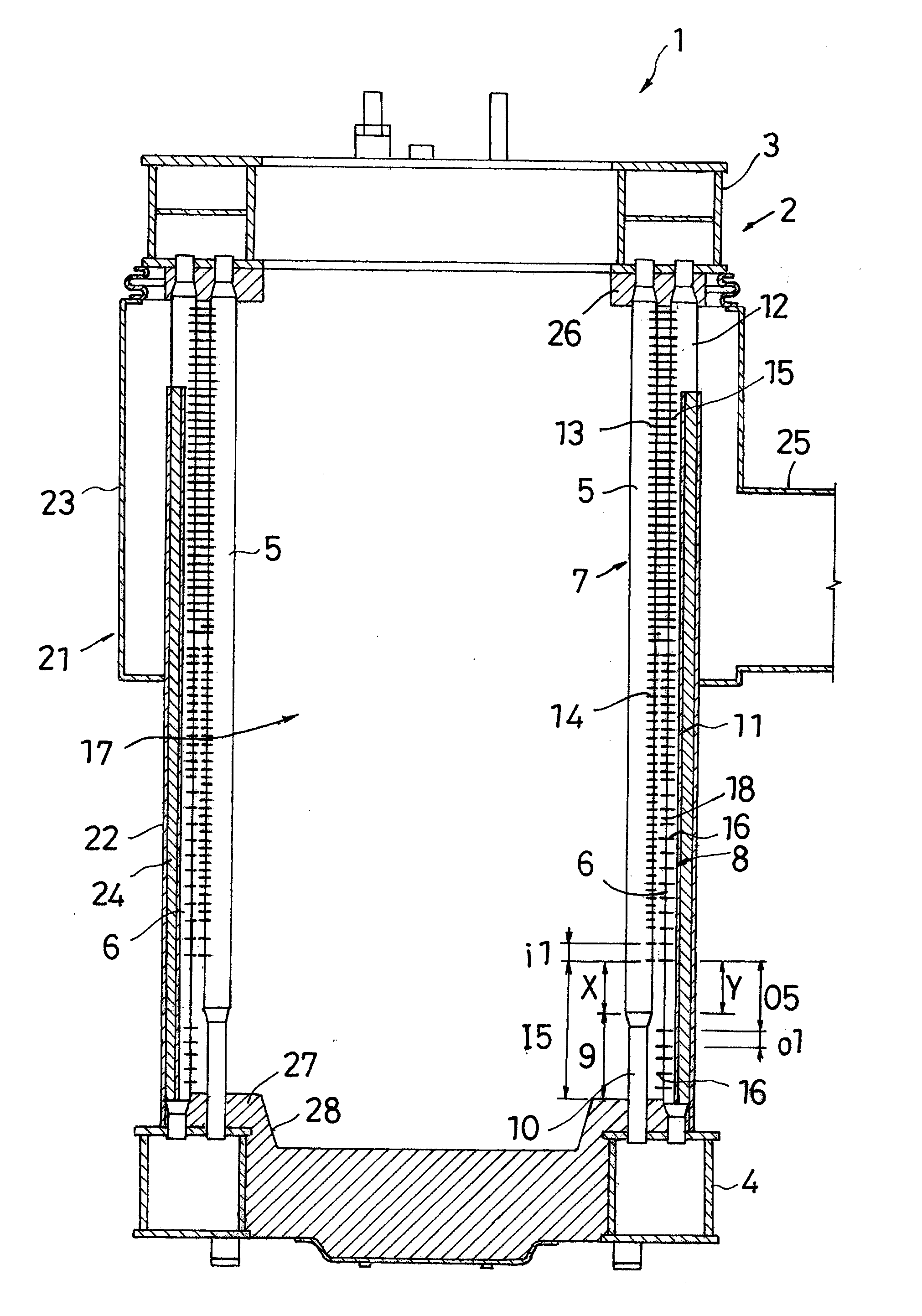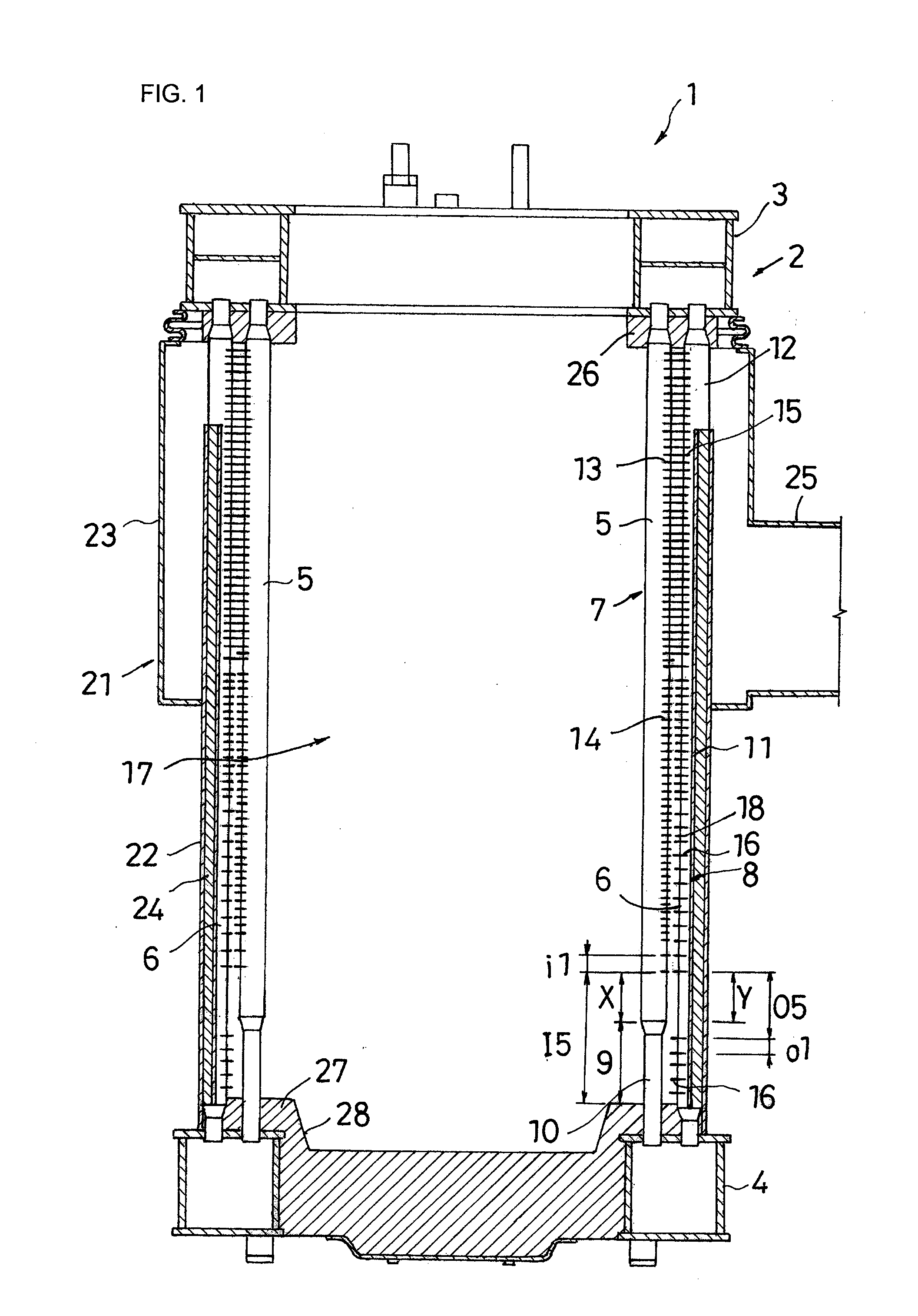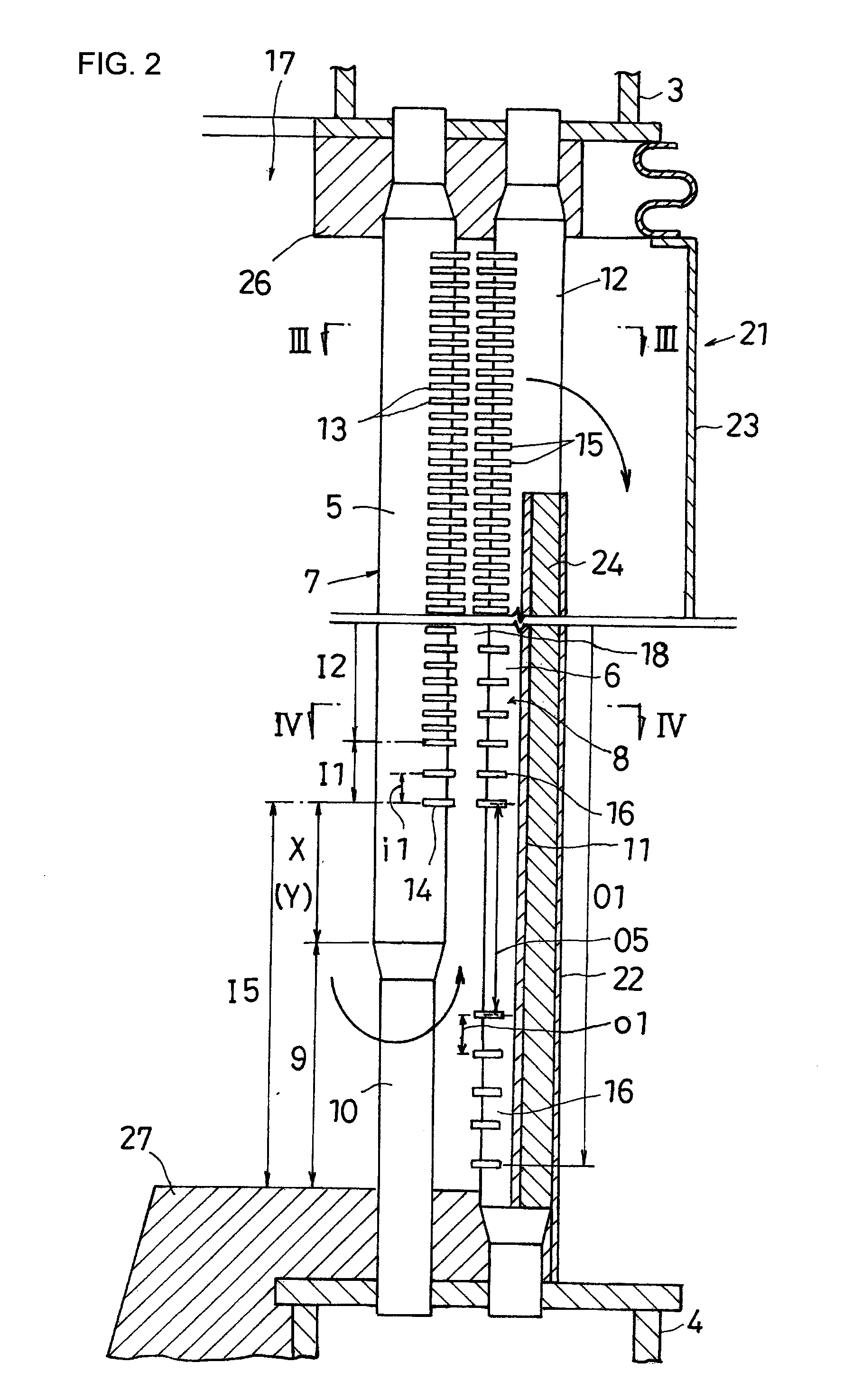Boiler
- Summary
- Abstract
- Description
- Claims
- Application Information
AI Technical Summary
Benefits of technology
Problems solved by technology
Method used
Image
Examples
Embodiment Construction
[0033]Hereinafter, a specific embodiment of the present invention will be described with reference to the drawings.
[0034]FIG. 1 is a schematic longitudinal cross-sectional view showing one embodiment of a boiler 1 of the present invention. FIG. 2 is an enlarged view of a part of FIG. 1, and FIGS. 3 and 4 are a cross-sectional view taken along and a cross-sectional view taken along IV-IV in FIG. 2, respectively.
[0035]The boiler 1 of the present embodiment is a multitubular once-through boiler including a cylindrical can body 2. The can body 2 is constructed by connecting a number of water tubes (heat-transfer tubes) 5, 5, . . . , 6, 6, . . . arrayed cylindrically between an upper header 3 and a lower header 4.
[0036]The upper header 3 and the lower header 4 are arranged in parallel at a vertical distance from each other, and are each formed into a hollow annular shape, Moreover, the upper header 3 and the lower header 4 are respectively arranged horizontally on the same axis.
[0037]The...
PUM
 Login to View More
Login to View More Abstract
Description
Claims
Application Information
 Login to View More
Login to View More - R&D
- Intellectual Property
- Life Sciences
- Materials
- Tech Scout
- Unparalleled Data Quality
- Higher Quality Content
- 60% Fewer Hallucinations
Browse by: Latest US Patents, China's latest patents, Technical Efficacy Thesaurus, Application Domain, Technology Topic, Popular Technical Reports.
© 2025 PatSnap. All rights reserved.Legal|Privacy policy|Modern Slavery Act Transparency Statement|Sitemap|About US| Contact US: help@patsnap.com



